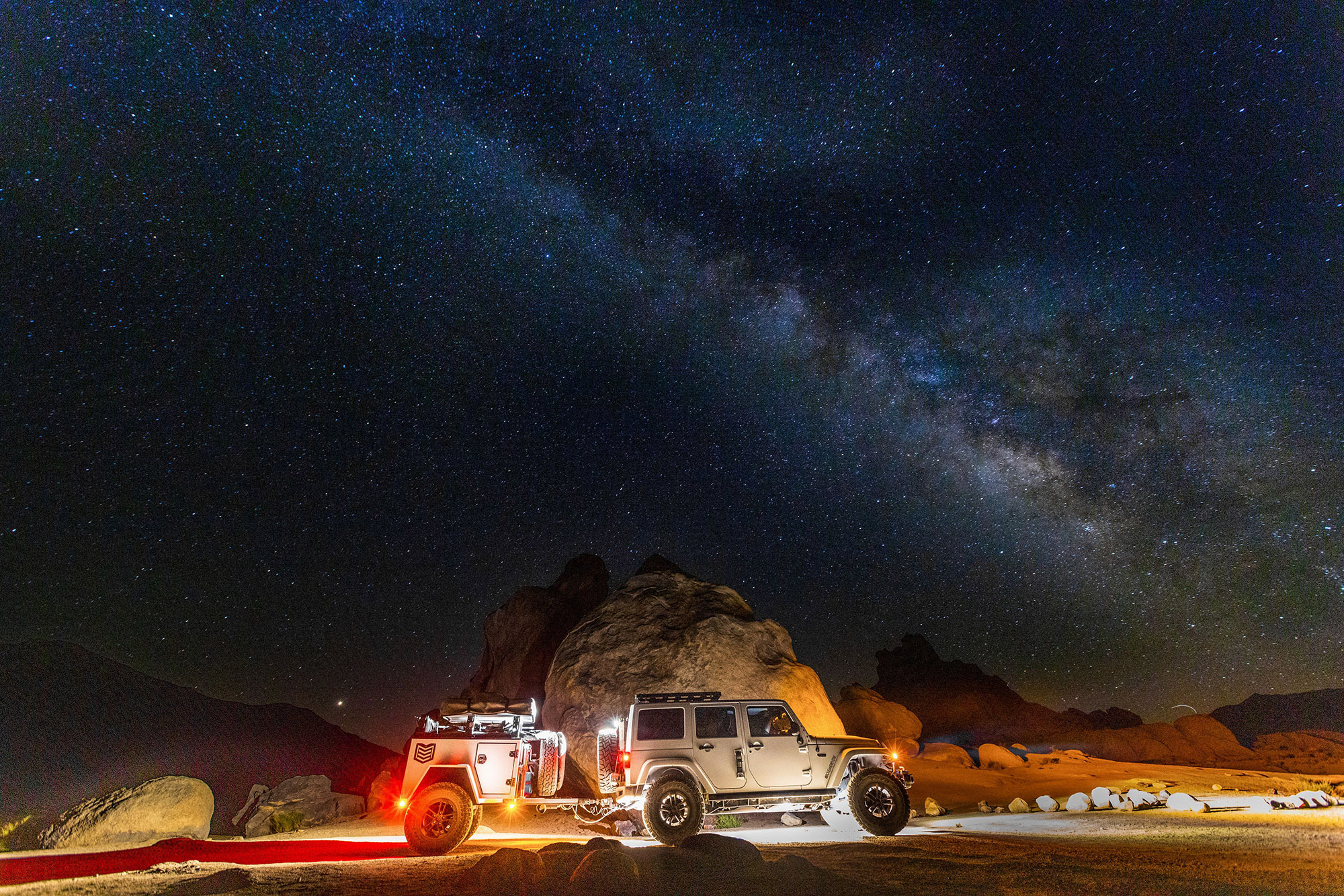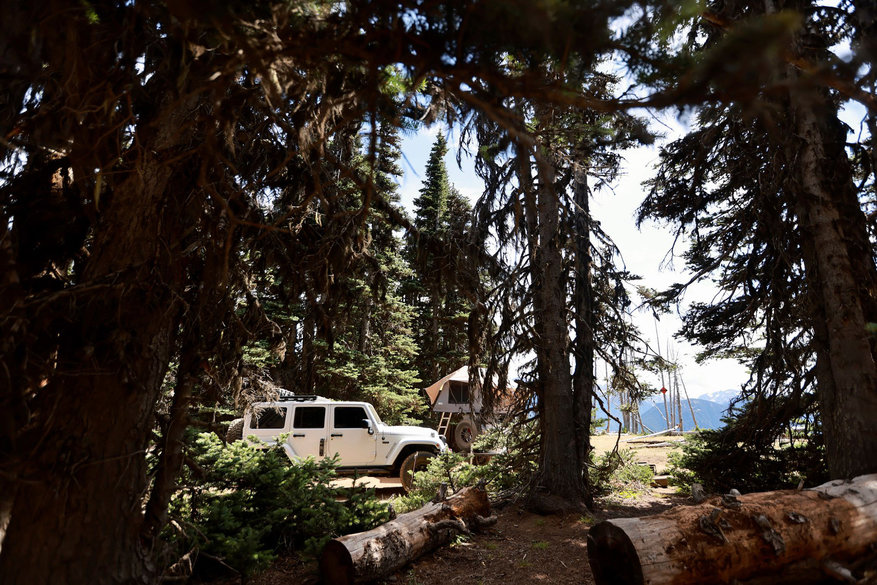by Tara McGovern
Torque Correspondent
Part Two of Three
Overlanding can be a difficult and daunting proposition for many. What to get, how to load it on the vehicle, traveling safe and how best to set stuff up once you've reached your destination are all valid questions that many ask.
In the second part of this series, we will look at different ways to set up your camp kitchen once the day is over and you are ready to settle down, as well as the types of equipment you may want to bring along for the ride and how to store those items.
Basic Camping Gear and Tips:
When it comes to camping, I'm truly a minimalist and keeping everything as small and light as possible inside the vehicle is key. Proper storage of all of your gear is important to the success of any off-grid trip because it impacts vehicle safety and added weight is limiting.
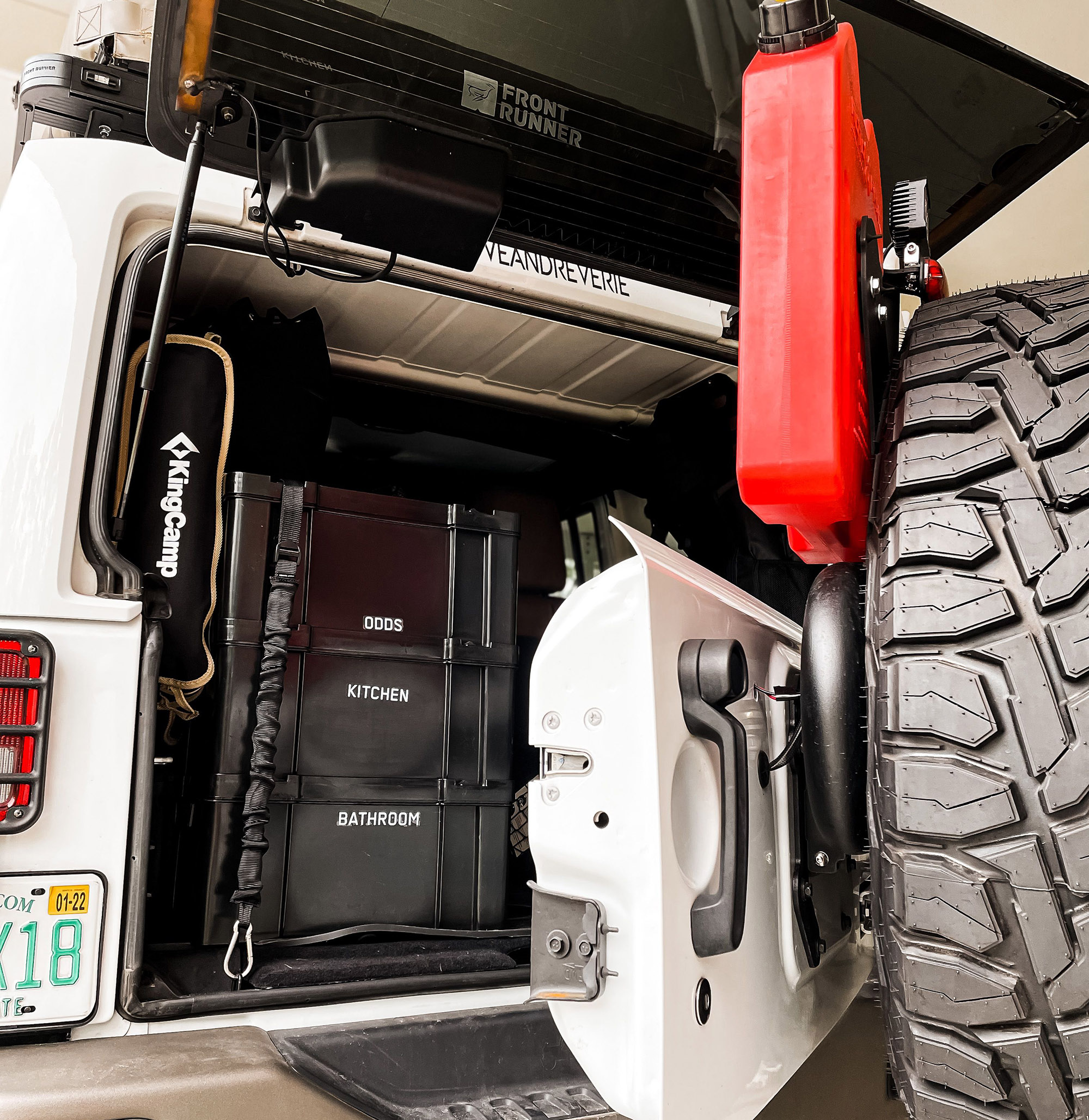
One thing to keep in mind, you should pack the heaviest of your gear as low as possible in your vehicle. If you are running a trailer in four-wheel drive, your weight limit on that shouldn’t be what the specs of your vehicle recommend.
Instead, it should really be at around 50 percent of that max number. For example, if your towing limit is 3,500 pounds, then you should cut that number in half and make sure to also factor in any of that added weight you packed in your Jeep. For myself, I keep our trailer at under 1,500 total pounds when it is fully loaded.
Tents:
I know rooftop tents are all the rage for many overlanders right now, but I’m one of those people who actually usually errs on the side of not running a tent on the roof most of the time.
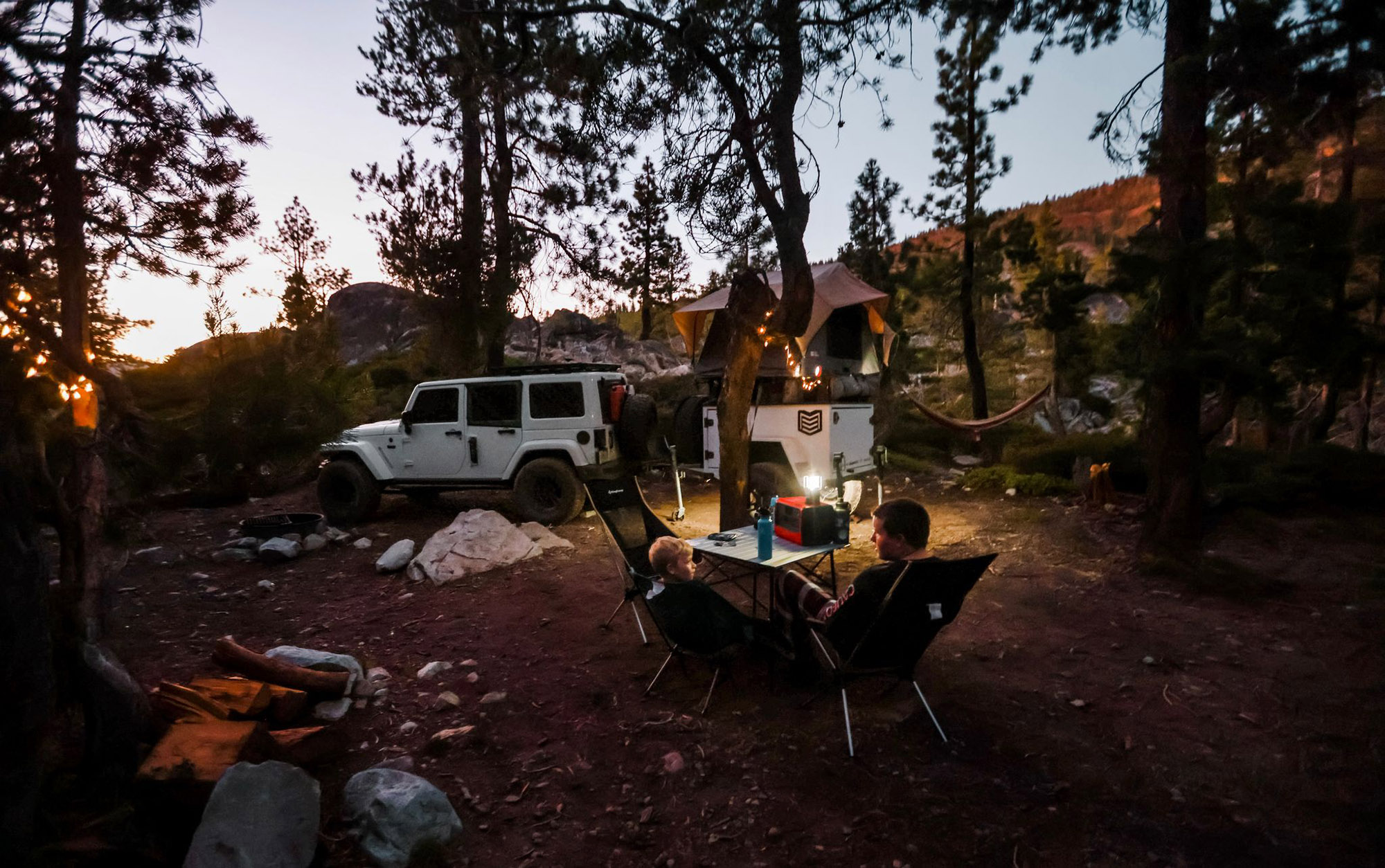
I currently run our Front Runner RTT on our Symmetry Overland trailer instead. While I prefer this one, there are many others out there that are just as nice such as Tepui, Roam, Rough Country, Body Armor and Overland Vehicle Systems.
I am not a fan of making a Jeep top-heavy or adding to the chance of rollover. Many people do like the idea of having their tent off the ground because they fear wildlife intrusion. I hate to break it to you though, being a few feet off the ground really will not deter larger animals such as bears.
While I am not a rooftop tent person, I am a big fan of tents you can attach to the back of your vehicle that allows you to make that area into sleeping quarters. I also like quick pop up tents as well.
We use the flip pop tent by Front Runner, but there are many others. One example of a tent that we have used over the years for attaching to the back of the jeep is Rightline Gear's 4x4 Tent and the Napier SUV Tent.
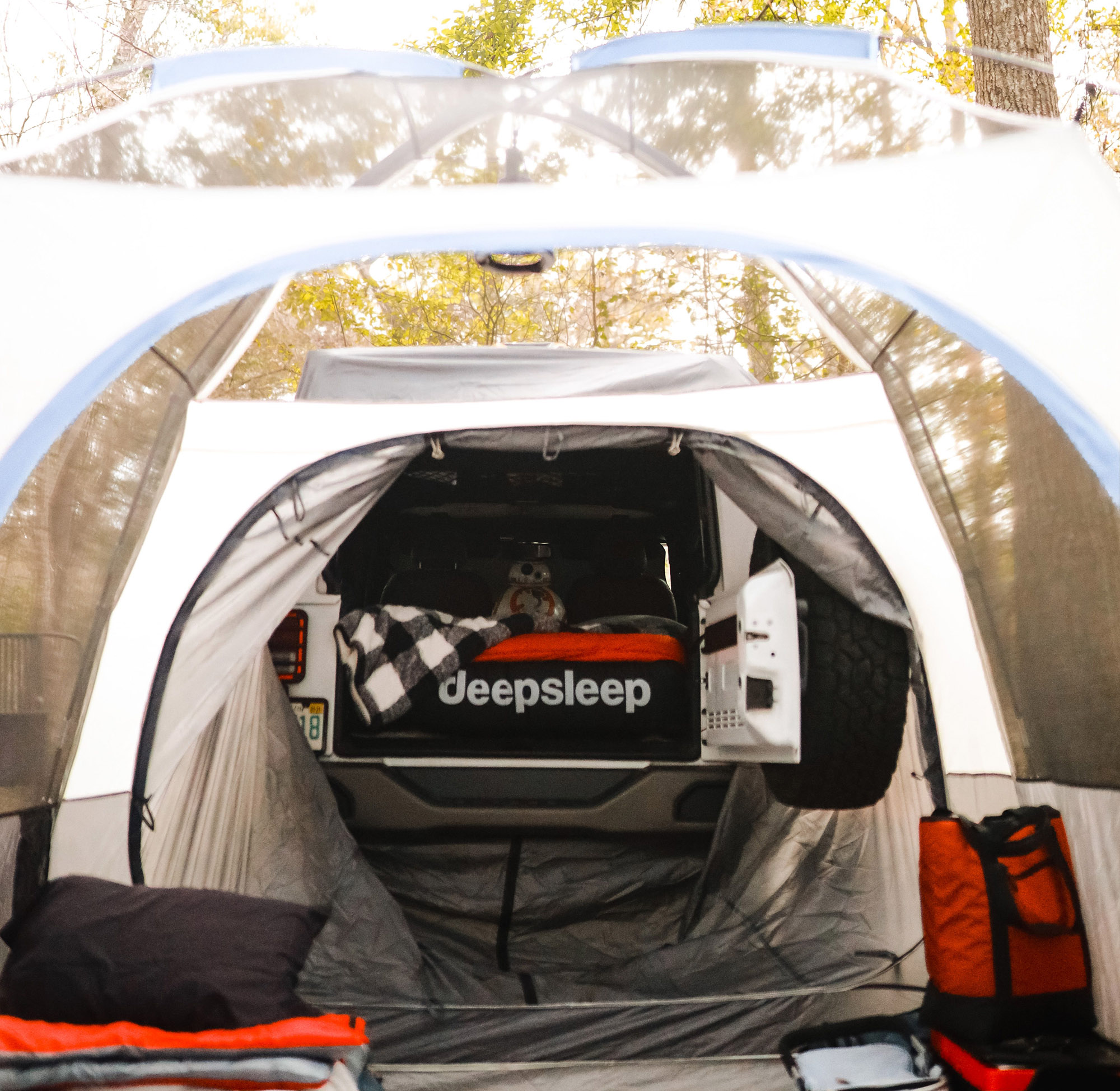
In addition to that, we use the DeepSleepforJeep mattresses every night when we camp both in the jeep and tents. Another nice air mattress is AirBedz.
Camp Kitchen:
After a long day on the trail, having to set up a lot of equipment in the middle of nowhere or making a big meal can be tiring. Keeping the kitchen tools streamlined and multipurpose helps me avoid feeling burned out by camp chores.
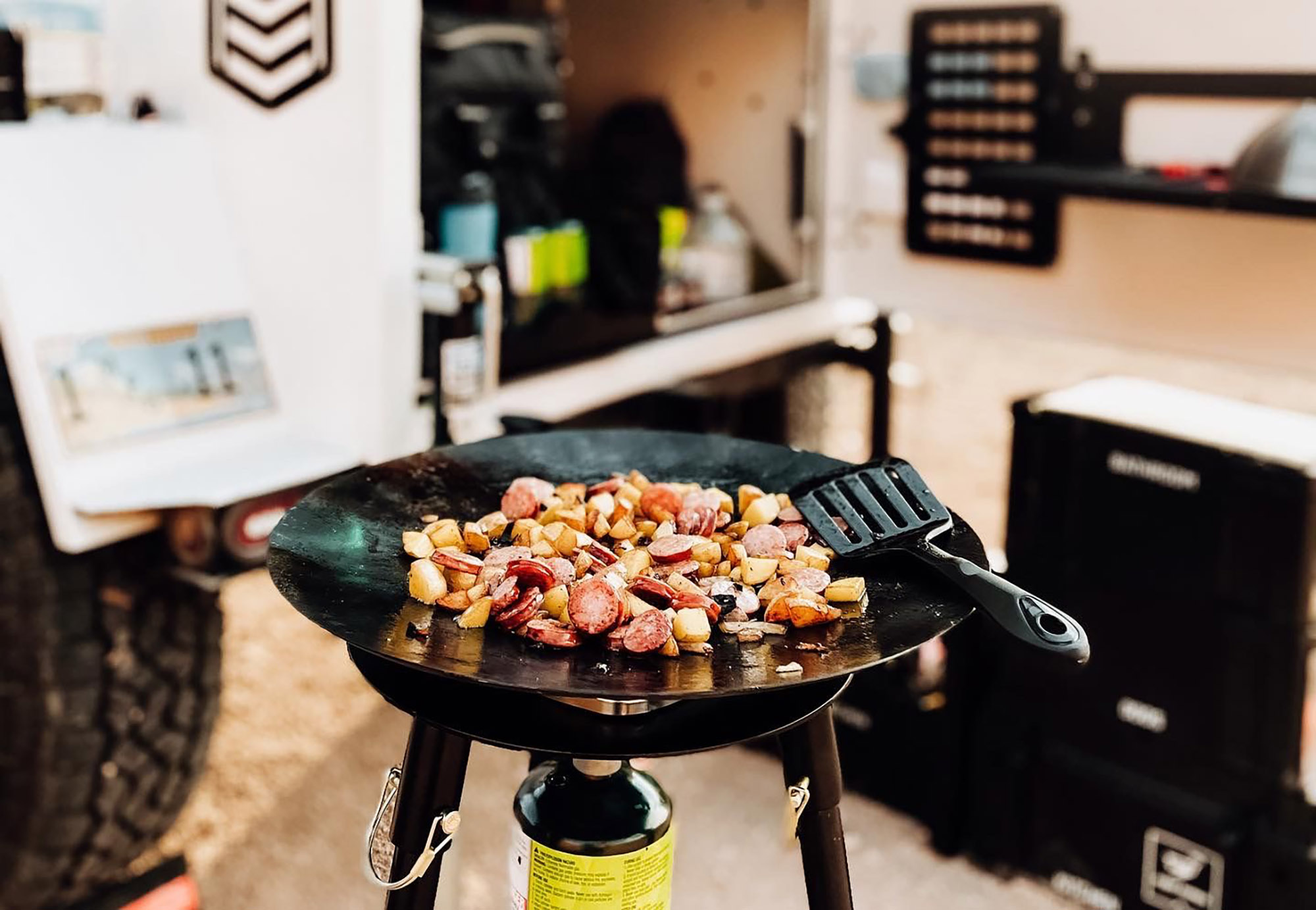
A skottle or camp griddle are great options for a multipurpose cooking surface and they also negate the need for a fire if you are in an area with a burn ban.
My boys are huge fans of foil pack meals where we just throw all the food together into a foil packet and put it over the fire to cook. We adopt the same method with skottle cooking and always have meals that can have all the ingredients combined.
Having a fridge or cooler is a necessity, but carrying a huge amount of food that requires refrigeration can be frustrating when you are very far off-road and do not have access to stores or ice. So I try to make most of our food things that do not require refrigeration.
Camp Storage:
Keeping everything organized is a very important key to enjoying the process of traveling. Nothing causes a family argument or kills more time than not being able to find something.
I love to use labeled storage boxes that can stack together like the Front Runner wolf and cub packs. I can move them between the Jeep and trailer if needed. There are lots of great options out there, just make sure they are waterproof.
I also carry a lot of waterproof compression sacks that I use to store sleeping bags, bedding, clothing, and other essentials to make sure the weather doesn’t get to them. I get them in different colors so that I can color code and easily know what is inside each bag. It makes camp set up and break down so much faster when everything has a home.
Camp Cleanup:
Leave no trace and following Tread Lightly! rules should always be second nature when you are on the trail or camping. Make sure you carry scent blocking bags for trash (this is especially important in bear country), and always take all of your trash with you when you leave. PUT OUT YOUR CAMPFIRE PROPERLY and make sure it’s actually out before you leave. Do not use chemicals or cleaning products that are not biodegradable.
